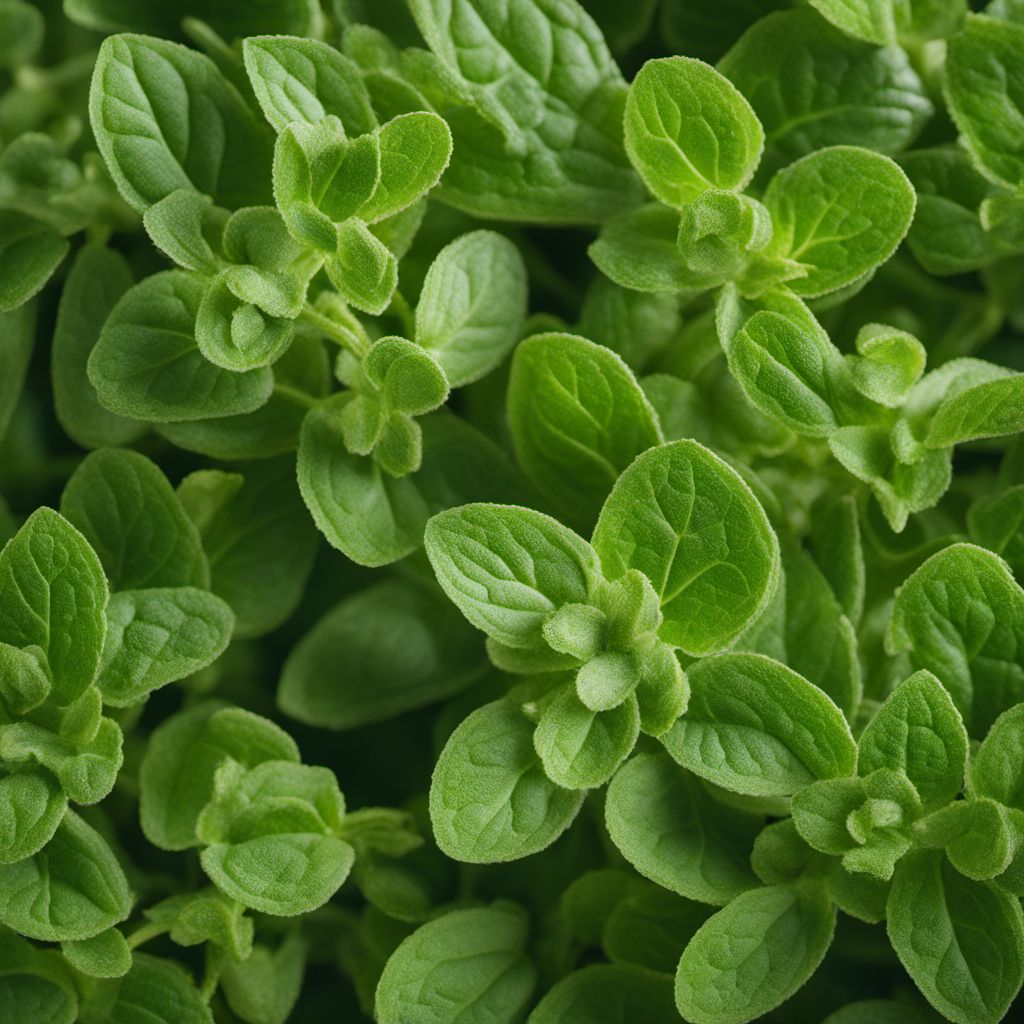
Ingredient
Marjoram flavour
The Fragrant Herb: Marjoram and Its Aromatic Delights
Marjoram is a small, bushy herb with delicate leaves that have a sweet and slightly floral flavor. It is often described as a milder version of oregano, with hints of citrus and pine. The leaves can be used fresh or dried, offering a distinct aroma and flavor to dishes.
Origins and history
Marjoram has been used in culinary practices since ancient times. It is believed to have originated in the Mediterranean region and was highly regarded by the Greeks and Romans. It has been used in traditional medicine for its potential health benefits as well.
Nutritional information
Marjoram is low in calories and rich in essential oils, antioxidants, and vitamins. It provides a good source of vitamin K, vitamin A, and iron.
Allergens
There are no known allergens associated with marjoram.
How to select
When selecting marjoram, look for fresh leaves that are vibrant green and free from wilting or discoloration. The leaves should have a strong aroma when gently crushed. If purchasing dried marjoram, ensure it is stored in an airtight container and has not lost its potency.
Storage recommendations
To maintain the freshness of marjoram, store it in a plastic bag or airtight container in the refrigerator. Alternatively, you can dry the leaves and store them in a cool, dark place.
How to produce
Marjoram can be easily grown in home gardens or pots. It thrives in well-drained soil and requires full sun exposure. Regular pruning will promote bushier growth and ensure a continuous supply of fresh leaves.
Preparation tips
Marjoram is a versatile herb that can be used in a variety of dishes. It is commonly used in Mediterranean cuisines, such as Italian and Greek. Add it to tomato-based sauces, roasted vegetables, soups, stews, and marinades for a fragrant and flavorful touch.
Substitutions
Oregano can be used as a suitable substitute for marjoram, as they belong to the same botanical family and share similar flavor profiles. However, keep in mind that oregano has a stronger flavor, so adjust the quantities accordingly.
Culinary uses
Marjoram is commonly used in Mediterranean dishes, such as pizza, pasta sauces, and herb-infused oils. It is also a popular addition to roasted meats, grilled vegetables, and salad dressings.
Availability
Marjoram is commonly available in Mediterranean countries, such as Italy, Greece, and Turkey. It is also cultivated in other regions with suitable climates, including North America and parts of Asia.
More ingredients from this category » Browse all

Blackberry flavour
The Essence of Luscious Berries

Grape flavour
The Essence of Grape: Unlocking the Flavorful Delights

Extra hot flavour
Fiery Heat: Extra Hot Flavor

Ginseng flavour
"The Energizing Essence: Unveiling the Enigmatic Ginseng Flavour"

Mocca flavour
"The Perfect Blend: Unveiling the Magic of Mocca Flavor"

Celery flavour
"The Versatile Essence of Celery: Unleashing the Delicate Flavors"

Sour flavour
The Tangy Twist: Unveiling the Secrets of Sour Flavour

Pastry flavour
The Essence of Pastry: Unveiling the Flavorful World of Pastry Flavour

Citron flavour
Zesty Essence: Citron Flavour

Herbs flavour
The Essence of Nature

Blue cheese flavour
The Bold and Tangy Indulgence

Leek flavour
"The Subtle Allure of Leek: Unveiling the Delicate Flavors of this Versatile Ingredient"